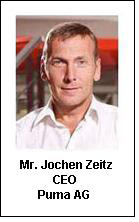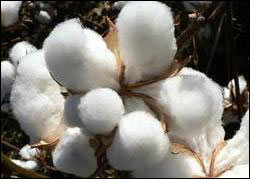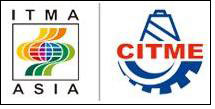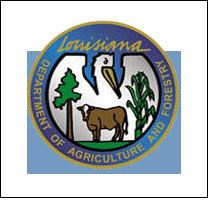 Rita Galkina
Rita Galkina IVANA J
IVANA J Kristin G
Kristin G Manuella Lupascu
Manuella Lupascu Marie M
Marie M
Hengyi Petrochemical will be setting up a project for the production of Purified Terephthalic Acid (PTA) with an annual production capacity of 1.5 million tons. The project is estimated to generate sales revenue of 10.5 billion Yuan with nearly 1.27 billion Yuan of net profit.
Upon completion of the project in about two years’ time, the PTA production capacity of the company’s subsidiary Zhejiang Yisheng Petrochemical will increase to 2.56 million tons.
Hyengi has also announced setting up of a facility on 121,578 sq m of land for annual production of 90,000 tons of fibre. This factory will include two fibre factories, which will house five polyester filament production lines.
The company also plans to invest in two lines to produce caprolactam (CPL). Upon establishment, the overall CPL production capacity will increase to 100,000 tons. CPL project is likely to bring sales revenue of 3.86 billion Yuan, and 559.32 million Yuan of net profit.
To meet expenses of about three billion Yuan needed for these expansion plans, the company is going to issue 65 million shares at 46.4 Yuan per share in a private placement.
 The Sportlifestyle company PUMA AG herewith declares that the arbitration ruling of 2 June 2010 by a Spanish arbitration panel regarding the one-time payment of 98 million Euros has been repealed by the District Court of Madrid. PUMA is therefore no longer obliged to pay the amount of 98 million Euros.
The Sportlifestyle company PUMA AG herewith declares that the arbitration ruling of 2 June 2010 by a Spanish arbitration panel regarding the one-time payment of 98 million Euros has been repealed by the District Court of Madrid. PUMA is therefore no longer obliged to pay the amount of 98 million Euros.
The verdict was reached on 14 June 2011. This outcome is a direct consequence of PUMA’s successful appeal against the arbitration ruling, which previously required remittance of said funds to the former Spanish licensee and holder of the remaining rights Estudio 2000 S.A. to vest the remaining trademark rights in Spain.
"The ruling by the District Court of Madrid is totally in line with what we had anticipated and frees us from the payment of 98 million Euros for the vesting of PUMA trademark rights,” said Jochen Zeitz, Chairman and CEO of PUMA AG. “We will now make full use of all the options available to us to secure all PUMA trademark rights in Spain."
PUMA will continue its efforts in uniting all Spanish PUMA trademarks.
With the objective of being "The Most Desirable and Sustainable Sportlifestyle Company”, PUMA's position as one of the few, true multi-category brands is to be strengthened and the opportunities offered by the sportlifestyle market are to be systematically exploited in all categories and regions.
As a multicategory supplier, PUMA is active in categories and business fields/divisions that suit its unique brand positioning, and in which permanent value increases can be achieved for the company. PUMA is positioned as a sportlifestyle brand that takes pleasure in skillfully combining sports and lifestyle influences and which strives to contribute to a better world.
 NY futures continued to slide this week, as July dropped 509 points to close at 145.96 cents, while December fell 1281 points to close at 120.18 cents.
NY futures continued to slide this week, as July dropped 509 points to close at 145.96 cents, while December fell 1281 points to close at 120.18 cents.
Although US crop prospects continued to deteriorate, as West Texas and parts of the Southeast are still suffering from drought, with no significant rain in sight, the market's focus has been elsewhere this week.
It was the Greek debt crisis that has been unnerving traders, as there is growing concern that Greece could turn into another "Lehman Brothers" and trigger a chain reaction of negative credit events. Yields of 2-year Greek notes traded at over 30% and credit default swaps for Greek, Irish and Portuguese debt all surged to record levels. French and German banks as well as pension funds would be hurt the most by a Greek default and Moody's has already threatened to downgrade the rating of several French banks.
But Greece is just the tip of the iceberg, as Ireland, Portugal, Belgium and even Italy and Spain are all facing serious debt issues of their own. In the case of defaults, the institutions that insured sovereign debt would take a serious hit and this in turn could trigger another de-leveraging phase and credit crunch. Only this time around it would become a lot harder for central bankers to reflate the bubble.
The uncertainty in Europe and the strengthening US dollar has prompted many money managers to move to a "risk off" position by reducing bets in stocks and commodities. The silver lining for cotton in this regard is that speculators and index funds currently own much smaller net long positions in cotton futures and options than they did three years ago, which should mitigate the impact of any de-leveraging.
However, it is not just these macro events that have been weighing on the cotton market, but demand in the physical market has basically been non-existent lately. Mills are still trying to digest high-priced inventories of cotton, yarn and fabrics and with the huge price swings we have seen in recent months, there is a lot of confusion as to where a sustainable price level for cotton really is.
The latest US export sales report was actually a pleasant surprise after 11 consecutive weeks of negative numbers in current crop. Net sales of Upland and Pima cotton amounted to 10'300 running bales for this season and 39'200 running bales for next marketing year. Shipments of 227'100 running bales reduced the outstanding balance for the current marketing year to just 2.2 million running bales (last year 3.4 million bales) and as we have stated last week, at the current pace of shipment all the inventory would be gone by September.
This current tightness in the US physical market is being reflected by the July/Dec spread, which has widened from 1806 to 2578 points this week. Maybe we are seeing a repeat of what happened with the May/July spread, where a widening inversion rather than a rally in the spot month reflected the short squeeze. As of this morning there were still 26'694 contracts open in July, with only five sessions to go before First Notice Day on July 24. Although the market feels extremely weak at the moment, July shorts need to be careful not to overstay their welcome, since we still believe that there is not enough cotton available to fulfill existing commitments until new crop. In other words, there may be a taker or two waiting to move cotton off the board.
 Debenhams has revealed that the de rigueur way for British men to wear their shirts this season is with three buttons undone, otherwise known as the 'shirtego' trend.
Debenhams has revealed that the de rigueur way for British men to wear their shirts this season is with three buttons undone, otherwise known as the 'shirtego' trend.
Last seen on seventies lotharios such as Richard Gere in 'American Gigolo' and John Travolta in 'Saturday Night Fever', the bare chest has marked the return of the 'machosexual' - men who are not afraid to be masculine, confident and sexy.
Department store, Debenhams asked its customers, "how low can you go" and found that 75 per cent of men now regularly wear their shirt with three buttons undone on a night out, 41 per cent of men will risk a four button undone look and 36 per cent of men will even risk the fashion at work.
Previously, shirts buttoned up to the neck with ties were expected for work and formal events, one button undone with a tie for the end of the working day, two undone for a good night out and three only for those rare tanned and toned few.
Paul Baldwin, Menswear Director at Debenhams said: "This is traditionally a look more commonly associated with Latin lovers, but it has now hit these shores with British men embracing the warmer weather and the salon to bear their chests.
"You only need to look at Simon Cowell vs. Louis Walsh on the X Factor to know that button-free fashion gets the girls"
The men of The Only Way is Essex have also brought the look celebrity status, with 62 per cent of men citing the sexy, successful reality TV stars as encouraging them to take the plunge.
Ryan Reynolds, Gerard Butler, Tom Selleck and Burt Reynolds were also stated as sartorial inspiration for the dramatic trend hitting the high street.
Debenhams survey found that while the exhibitionist look was most easily sported in the creative industries of advertising, marketing, PR and design, the return of dress down Fridays has brought the deep V to the more traditional industries.
Research showed that 27 per cent of pioneering accountants and lawyers would venture the look at the end of the week, but only just before leaving the office for Friday drinks.
Baldwin continued: "This research has helped us review the design of our men's shirts. We are looking into ways to ensure the collar always sits open to display the chest when the shirt is left undone.
"Time in the gym will also help wearers pull off the look successfully, however, make no mistake, a thick chest rug and heavy gold medallion is not due to make a comeback"
In response to a growing demand for independently-verified sustainable furnishing fabrics, NSF International, an independent developer of American National Standards that protects public health and the environment, has developed an official American national standard for sustainable commercial furnishing fabrics - NSF/ANSI 336: Sustainability Assessment for Commercial Furnishings Fabric.
Developing national standards by which to measure a product's sustainability attributes brings transparency and credibility to the sustainability marketplace and helps eliminate greenwashing. Independent, third-party organizations can now certify commercial furnishing fabrics against the new Sustainable Commercial Furnishings standard to verify the furnishing fabrics are sustainable. This satisfies a growing demand from designers, architects, facility managers and purchasing agents for independently-verified sustainable fabrics to use in their products and facilities.
The science-based standard (NSF/ANSI 336) addresses the environmental, economic and social aspects of fabrics used in commercial furniture and other furnishings. A variety of fabrics can be certified to the standard, including woven, non-woven, bonded and knitted fabrics used for upholstery (e.g. office and hotel furniture), as well as vertical fabrics (e.g. drapery, panel system fabrics) and decorative top of bed applications (e.g. bedspreads) that are commonly used in institutional, hospitality and office settings. The standard also incorporates life cycle assessment criteria, which measures inputs, outputs and environmental impacts of textile products across their entire lifespan, from cradle to grave.
The standard outlines several criteria that are used to measure a product’s sustainability attributes. The criteria are divided into categories such as fiber sourcing, water and energy use, and recycling practices, and a weighted point system is assigned to each category. A fabric’s total score determines Compliant, Silver, Gold or Platinum tier certification. For example, a product certified Compliant meets entry level criteria, and Platinum adheres to the most strenuous requirements.
"Products making environmental claims continue to enter the marketplace and third-party certification to national standards such as this helps eliminate greenwashing and cultivates confidence in buyers and the public that a product is sustainably produced," said Jane Wilson, National Center for Sustainability Standards (NCSS) Director, NSF International.
"Although the economic downturn has created many challenges, the contract textile industry has responded with this proactive sustainability standard that will help differentiate their products in the global marketplace and contribute to the long term sustainability and success of the industry," said Janan Rabiah, Executive Director, Association for Contract Textiles.
NSF International has been testing and certifying products for safety, health and the environment since 1944. As an independent, public health and safety organization, NSF's mission is to protect human health and the environment through standards development, inspection, testing and certification for the food, water, build/construction, retail, consumer products, chemical and health science industries.
 The third ITMA ASIA + CITME combined exhibition is expected to draw positive response from leading textile machinery manufacturers as the Chinese textile industry continues to expand. It will be held at the Shanghai New International Expo Centre (SNIEC) from 12 to 16 June 2012.
The third ITMA ASIA + CITME combined exhibition is expected to draw positive response from leading textile machinery manufacturers as the Chinese textile industry continues to expand. It will be held at the Shanghai New International Expo Centre (SNIEC) from 12 to 16 June 2012.
According to its owners, the European Committee of Textile Machinery Manufacturers (CEMATEX), China Textile Machinery Association (CTMA), the Sub-Council of Textile Industry, CCPIT (CCPIT-Tex) and China Exhibition Centre Group Corporation (CIEC), the positive textile machinery shipment statistics released last month by the International Textile Manufacturers Federation (ITMF) further shows that demand for machinery has picked up.
Speaking at the press conference held at SNIEC, Mr Fritz Mayer, Board Member of CEMATEX, said, "As the global economy continues to show strong signs of recovery, we expect our 2012 edition to be even bigger than the previous showcase in 2010."
Explaining further, he said, "Currently, the textile machinery industry report card is looking much better compared to the previous two years. The ITMF's International Textile Machinery Shipment Statistics show that investments, which were reduced during the 2008 crisis, have picked up significantly. In fact, I've been told that a number of machinery manufacturers have full order books, with delivery times, in some cases, of up to two years".
ITMF statistics point to buoyant demand for textile machinery in the past decade. Although imported textile machinery investments fell back in 2008 and 2009 after an excellent performance in 2007, they have started to register an upward trend since last year.
Machinery shipment figures for 2010 released recently reveal that substantial investments have been made in sectors such as short-staple spindles, open-end rotors, texturing spindles, shuttle-less looms, circular knitting machines and electronic flat knitting machines.
Also speaking at the press conference, Mr Wang Shutian, President of China Textile Machinery Association (CTMA) painted a positive picture of the Chinese industry. Reiterating that the textile industry is a traditional pillar of China's economy, he gave an overview of the industry, including plans to strengthen the competitiveness of the industry.
In 2010, China's textile and apparel exports hit US$206.5 billion, accounted for some 33 per cent of the global textile and apparel trade. On the textile machinery industry front, Mr Wang highlighted the critical role played by the Chinese textile machinery industry.
"The textile machinery industry has laid a solid foundation for the rapid development of the textile manufacturing industry," he said, adding that the industry had 1,071 large-scale enterprises, employing 149,800 people, as at end 2010.
During the 11th Five-Year Plan period, business revenue grew at an average annual rate of 17.08 per cent, an increase of 3.4 per cent from the 10th Five-Year Plan. The total value of the industry almost doubled during the same period
 With a 10% increase in scale, Intertextile Shanghai Home Textiles 2011 will occupy 11 halls in the Shanghai New International Expo Centre. The event held from 29 – 31 August 2011 is the largest up to date. Suppliers exhibiting across the international halls include country and regional pavilions from Korea, Pakistan, Taiwan and Turkey, as well as new country pavilions from Greece, Italy and Spain. Exhibitors of bedding, curtain and upholstery fabrics will group into special product zones.
With a 10% increase in scale, Intertextile Shanghai Home Textiles 2011 will occupy 11 halls in the Shanghai New International Expo Centre. The event held from 29 – 31 August 2011 is the largest up to date. Suppliers exhibiting across the international halls include country and regional pavilions from Korea, Pakistan, Taiwan and Turkey, as well as new country pavilions from Greece, Italy and Spain. Exhibitors of bedding, curtain and upholstery fabrics will group into special product zones.
To tap into the Asian markets, Greek, Italian and Spanish pavilion exhibitors will stage their best and latest fabrics at the fairground. Exhibitor highlights will include:
Greek Pavilion
Coco-mat manufactures bedding, mattresses and home products made in natural or recycled materials including cotton, horsehair, seaweed, coco fibres and natural rubber. Its products serve both consumer and contract business.
K. Stamatopoulos S A is one of the largest wholesalers and has set up retail stores in the country. It produces decorative fabrics, upholsteries and curtains as well as a special woven vinyl flooring.
Vasilas Christos & Co Ltd is a leading curtain producer in Greece and the exclusive representative of DISNEY in Europe for rugs, wall to wall carpets, polyester mats and curtains since 2007.
Other leading manufacturers joining this zone include Anartisi Kiourktsoglou K & SIA E E, IFI S A, Sarlas S A and Zogometal S A
Italian Pavilion
Organised by The Chamber of Commerce in Caserta, this new pavilion will feature top suppliers of silk home products and furnishing fabrics from the region. They include S. & C. – Antica Lavorazione Orditi In Seta SRL, Tesseci SRL, S&B – Silk Beyond SRL, Fratelli Bologna E Marcaccio SRL and Gustavo De Negri & Zama SRL Manifattura Tessile. Other companies from Italy include Enzo degli Angiuoni and Luilor SpA. They will introduce high-end upholstery fabrics made from natural fibres, dobby and jacquard at the fair.
Spanish Pavilion
Comersan SA manufactures upholstery and decorative fabrics, home linens, contract products, micro fibres, light curtains and textile wall coverings.
Textiles Joyper SL supplies home decoration fabrics in a wide range of vibrant colours. The company will display its latest collection for the high-end Chinese consumer market.
Rafael Catala SA and Reig Marti SA offer high quality jacquard fabrics for furniture and home decoration products.
Other top suppliers in this pavilion include B&C Fabrics SL, Gonzalo Ferri SA and Textiles Frau Perez SL.
Well-established high-end bedding suppliers and brands also joined the fair to reach the growing luxury market in China. With over 100 years experience in producing bedding in Germany, Ibena will promote its new product line jointly with Cotton Council International. Standard Fiber from the United States will introduce the popular English brand, Peter Reed and new brand, Somerelle specifically for the Chinese market. Spring Global also from the US will represent the luxury brand, Court of Versailles at the fair. These companies will be showcased alongside other famous brands in hall W2.
In the Upholstery Zone, new comer UK Prestigous Textiles will feature an assortment of fabrics and wall coverings in contemporary and classic décor styles.
In the Curtain Zone, Benetex from Korea will highlight fancy mixed linen, nude and metallic high density sheer curtains as well as hand painted sheer curtains. The Japanese based supplier Suzutora Corporation will present their energy-saving curtain and blind fabrics which are nano-metal coated and flame retardant.
Aiming to promote their brands to the international marketplace, manufacturers from China’s major home textile production bases will group into six regional pavilions at the fair’s domestic halls. These regions include Pujiang and Jiande which are famous for bedding; Haining and Shaoxing which are well known for decorative fabrics; as well as Tongxiang and Yuhang which are renowned for both.
Hangzhou Wikman Home Fabrics and Lace consider the fair an important gathering point for their customers from overseas and China. At the fair, they will unveil four new home textile products, combining different materials with sophisticated arts and crafts designed by Italian, Japanese and Hong Kong designers.
Zhejiang Hanboo Home Textile aims to strengthen its trade with current US and European customers as well as to find new businesses from Africa and South America through the fair. They will showcase colourful and intricately delicate curtains, bedding and furnishing fabrics.
 Louisiana Department of Agriculture and Forestry officials say cotton plants may look beautiful in private home landscapes but the state must monitor all planted cotton for boll weevils, including that used for ornamental purposes.
Louisiana Department of Agriculture and Forestry officials say cotton plants may look beautiful in private home landscapes but the state must monitor all planted cotton for boll weevils, including that used for ornamental purposes.
Todd Parker, LDAF assistant commissioner for the Office of Agricultural and Environmental Sciences, said state boll weevil eradication laws provide that anyone who wants to plant cotton for non-commercial purposes must receive prior permission from the Commissioner of Agriculture and Forestry.
"We need to know where all cotton plants are located throughout the state so we can monitor for the presence of boll weevils in order to protect Louisiana’s cotton industry," Parker said. “The LDAF sets a number of traps in cotton fields every year to check for the presence of boll weevils.”
Parker said increasing numbers of gardeners outside of traditional cotton growing areas are planting cotton to add interest to their garden landscapes. Others plant small plots for the fiber they use to spin their own thread for fabrics. The LDAF must place a boll weevil trap at these locations, Parker said.
Historically, the boll weevil has been cotton’s most destructive pest. All cotton-growing states have eradication programs.
Cotton remains one of Louisiana’s leading crops. The 2010 figures indicated a harvest of more than 247,000 acres the value of the cotton sector is $210.1 million.
Canada’s Apparel Human Resources Council (AHRC) has released the findings and recommendations of a major study done on the Canadian apparel industry. The study titled ‘Pressing ahead: Canada’s transforming apparel industry’ was conducted by Alan Milstein and Co., a leading industry consultant. The AHRC had previously conducted labour market information study in 2004.
Since then, both Canadian and the global apparel industry have changed. The study gives a new definition, that the industry is not dependent on domestic production, but on domestic product development. Based on the new definition, the main sub-sectors are manufacturers, wholesalers/offshore producers, and retailers.
One of the major findings of the study is that the combined revenues of apparel manufacturers and wholesalers have remained unchanged from the pre-trade liberalization years of 2004 to 2008. It indicates that the industry did not face closures, but survived by adapting to newer realities by shifting business models.
The study has mentioned a list of challenges that will drive change in the apparel industry in the coming years. The list includes Government and social compliance, regulations, Internet, rising production costs, the globalization of retail, etc.
The study has also identified some issues that could be of concern to the industry. Most notable among them is the effect of the aging workforce, both at management level and in production units.
"The workforce has shifted from predominantly production-based to being slightly more service-based," the survey noted and went on to add that the trend is expected to continue. It is because the services sector may grow at a faster pace than the change in number of production personnel.
The survey found that the employers are generally optimistic about the future. They project that there will be significant employment growth in both production personnel and services during the next two years.
However, the survey also mentions, that the employers have expressed concern over some of the issues.
71% of companies surveyed continue to operate without strategic plans. This raises a concern whether the companies’ growth expectations are reasonable and achievable, especially when they are projecting a growth rate that is much higher than the general economic growth rate.
35% of companies face a problem in business continuity, i.e. they are either considering implementation of a succession plan, selling the company, or ceasing operations within the next two years.
Other than the senior managers, the study found, the industry is also facing the challenge of aging production workers. In fact, the study concludes that nearly 7,000 production workers could be nearing retirement. The problem is compounded further by the fact that there are no trained personnel available to train new production workers, due to the large scale downsizing in the last decade.
The 15th International Exhibition on Textile Industry (ShanghaiTex 2011) has received overwhelming responses since the beginning of exhibitors' recruitment. The exhibition is less than 1 week ahead and will be staged at Shanghai New International Expo Centre, Pudong, Shanghai during June 14 - 17, 2011.
ShanghaiTex 2011 will gather more than 1,000 exhibitors from 23 countries and regions, in which 40% are overseas exhibitors, and the total exhibition area will hit 92,000 sqm, occupying 8 exhibition halls fully. It is expected that total no. of visitors will reach 50,000, and 6,000 of them will be from overseas.
Benefited from the strong global market demand and its established reputation for almost 30 years, ShanghaiTex 2011 has brought together a group of textile experts to discuss and demonstrate the latest technology by delivering various sparkling concurrent events that excite visitors.
"The 2nd China Textile Industry Summit" will be held on Jun 13, 2011. The summit's keynote speakers will discuss the topic on strategic transformation - build up a strong nation for textile industry. The summit will focus on the analysis and interpretation of the 12th Five-Year Plan at different perspectives.